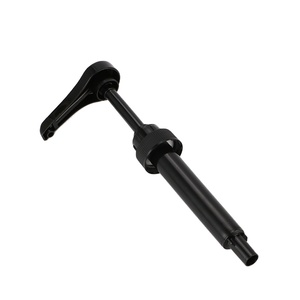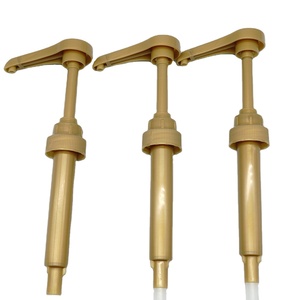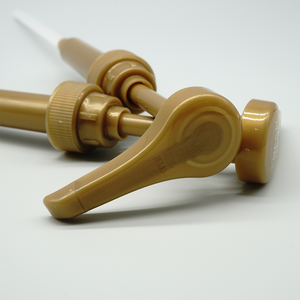
All categories
Featured selections
Trade Assurance
Buyer Central
Help Center
Get the app
Become a supplier

(5018 products available)















































 Ready to Ship
Ready to Ship





Artificial poppies are lifelike faux flower displays designed to replicate the appearance of real poppy blooms. They come in various designs, each with unique features and characteristics. Here's an overview of the different types of artificial poppies:
Silk poppies
Artificial silk poppies are made from a special kind of silk that looks like real flowers. They are handmade by skillful people who pay attention to the small details. These silk poppies are popular for decorating homes, offices, and stores because they stay looking nice for a long time. They don't fade or wither like real flowers, so they are a good choice for people who want to enjoy the beauty of flowers without the trouble of taking care of them.
Paper poppies
Paper poppies are another kind of artificial flower made for special events or to remember people who died in wars. Unlike real flowers, these poppies don't wither or die. They are made from paper and are strong, so they can be used for longer without getting damaged. Paper poppies are usually made in bright red and worn on clothing or displayed in public places to honor soldiers. They are an important symbol of remembrance and are chosen because they are affordable and easy to share with many people.
LED poppies
LED poppies are a type of artificial flower that uses LED lights to make them look pretty. These flowers don't die like real ones because they are not real; they are designed to last a long time. LED poppies often come in bright red colors to match the usual look of poppy flowers. They are used in homes, gardens, and events to add a decorative touch. The LED lights inside the flowers make them glow softly, creating a nice atmosphere. It's a modern way to use poppies without the care real plants need.
Clay poppies
Clay poppies are a type of artificial flower made from modeling clay. These flowers are shaped and colored to look just like real poppies. Clay poppies are durable and can be made in various colors and styles. Unlike real flowers that wilt, clay poppies stay unchanged and are often used for home decorations, art projects, or as gifts. They provide a long-lasting, beautiful alternative to real flowers.
3D printed poppies
3D-printed poppies are artificial flowers made using a 3D printer. This method lets designers create detailed poppies quickly and precisely. Depending on the design, 3D-printed poppies can be made from different materials, like plastic or metal. These poppies can look just like real ones or be made in new, creative ways. 3D printing allows for making poppies that are custom and one-of-a-kind. These flowers are used as decorations or art pieces and show how technology can make beautiful things.
Realism and Detail:
Designed to mimic the authentic appearance of natural poppy flowers. Meticulously crafted petals, leaves, and stems to capture the unique characteristics of each poppy species. Use of advanced materials like silk or polyester to achieve a lifelike look and feel. Attention to detail in coloring, texture, and shading. Includes natural imperfections like slight petal wrinkling or uneven edges for added realism. Incorporation of realistic-looking flower parts like the center, calyx, and leaves.
Color Variations:
Available in various colors to represent different poppy species. Red poppies are a classic symbol of remembrance for fallen soldiers. Purple and black varieties can indicate elegance or mourning. Yellow and orange varieties represent joy and creativity. White poppies symbolize peace and non-violence. Multi-colored arrangements allow for meaningful symbolism or unique displays.
Customization Options:
Custom-designed artificial poppies to meet specific needs. Options for custom colors, sizes, and flower arrangements. Can be branded with logos or specific designs for organizations. Customization allows for personalized memorials, events, or awareness campaigns.
Flower Parts Variations:
Artificial poppies come with different flower parts to enhance realism. Includes natural-looking flower centers, calyx, leaves, and stems. Different center designs, like fuzzy or textured, to match real poppies. Varied calyx designs to reflect the diversity among poppy species. Leaves are made flexible for easy positioning and to represent real leaves' natural look.
Durability and Maintenance:
Artificial poppies are made to last for years without fading or damage. Resistant to dust, water, and UV rays for long-term use. Easy to clean with a damp cloth or soft brush for maintenance. Ideal for indoor and outdoor displays due to their durable construction.
Artificial poppies have many applications across different industries. They are popular for their beauty and practicality. These are some common use cases for artificial poppies.
When choosing artificial poppy flowers, consider the following factors. They help to ensure a realistic look and fit for the intended purpose.
Choosing the right artificial poppies needs careful consideration. They should look at the material, detail, color, and usability. These factors ensure that the chosen poppies look great and last a long time.
Q1: Do artificial poppies look real?
A1: Yes, artificial poppies can look very real. High-quality artificial poppies are made with careful attention to detail. They use good materials. They have detailed petals, realistic colors, and lifelike textures. Some artificial poppies even have features like silk fabric or special UV-resistant coatings. These features help them look more like real flowers and protect them from fading in the sun.
Q2: Are artificial poppies a fire hazard?
A2: The fire risk from artificial poppies depends on the materials they are made of. Many artificial flowers are made from non-flammable or flame-retardant materials. It helps reduce the risk of fire. But, artificial poppies made from paper or fabric can still pose a fire risk. It's important to keep them away from candles, fireplaces, or other sources of heat. Always follow local fire safety rules and guidelines when using artificial flowers.
Q3: Can artificial poppies be used outdoors?
A3: Artificial poppies can be used outdoors, but choosing flowers made with weather-resistant materials is important. Look for poppies made with polyester or polyethylene. They are good for outdoor use. They don't fade or get damaged by rain, wind, or humidity. Also, consider artificial poppies with UV-resistant coatings. They are less likely to fade in the sun. Use artificial poppies with sturdy stems and bases. They will stay upright and not fall over in outdoor conditions.
Q4: How should artificial poppies be cleaned?
A4: Artificial poppies should be cleaned with care to keep them looking their best. Start by removing loose dirt or dust with a soft brush or cloth. Then, wipe the petals and leaves with a damp cloth. Make sure it is not too wet. Avoid using strong cleaners. They can damage the flowers. If needed, use a mild soap. After cleaning, let the flowers dry completely before putting them back in their display.